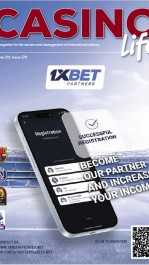The importance of storytelling to building a business. By Raymond Chan
Storytelling is an ancient art form, a powerful tool that has been setting visions, shaping values and dictating the agendas of societies for centuries. In the modern world this timeless skill transcends its narrative roots, becoming a critical element in business, education and leadership. While Steve Jobs himself harnessed this power to revolutionize the way we interact with technology, the essence of storytelling remains universal – whether it’s a brand crafting its identity, a fundraising effort for startups or a leader rallying a team towards a common goal. We are going to explore the transformative power of storytelling across various domains, providing insight into how stories can captivate, convince and convert audiences of any kind.
Setting the Stage for Maximum Impact
A storyteller speaks their first word to establish a frame for their audience – a lens through which the forthcoming narrative will be viewed. This framing is crucial, as it lays the groundwork for the message you intend to deliver. It's about setting the context, defining the boundaries of the conversation and planting the seeds of expectation.
Establishing a clear frame at the outset of your story is not merely a structural choice; it is a strategic one. By defining the frame, you ensure that your audience doesn't spend precious time guessing the intent or context of your narrative, potentially leading to misconceptions or disengagement.
Drawing the Battle Lines by Defining the Enemy
In any compelling story, the protagonist's journey is often defined by the obstacles they face, and this is where defining the enemy becomes pivotal. This 'enemy' can be a literal antagonist or an abstract concept, but its role is the same: to give the audience a clear understanding of what the hero is up against. Jobs was a maestro of this technique. In the narrative of the first iPhone, he positioned the physical keyboard as the enemy – a design barrier that constrained the user experience. He then methodically debunked alternative solutions, such as the stylus, to finally reveal the hero of his story: the human finger. This approach not only clarified the problem but also heightened the impact of the solution.
Jobs' knack for identifying an enemy didn't stop at product design; it extended to his marketing strategies. The iconic 1984 Super Bowl commercial for the Macintosh computer encapsulated this perfectly. Here, the enemy was the conformity and banality of the existing computing world. The Macintosh was positioned as the slingshot in the hands of David, ready to topple Goliath and free the masses from a monochromatic future. This narrative was powerful – it wasn't just selling a computer; it was inviting consumers to join a revolution

Image: Raymond Chan
The most powerful person in the world is the storyteller.” – Steve Jobs
The same storytelling principle is wielded with great effect by Disney, where every fairy tale is a canvas for conflict between good and evil, heroes and villains. This framework is not by chance but by design. It taps into the universal human experience, where challenges are faced, adversaries are conquered and, through that journey, heroes are made. By clearly defining the enemy, storytellers create a sense of urgency and a rallying point that can unite an audience, crystallize a message and make the triumphs of the protagonist all the more resonant.
Connecting with Audiences Beyond the Data
In the realm of storytelling, impact often comes not from the recitation of data but from relatable comparisons that bring the story to life. Jobs was a virtuoso in transforming numbers and specifications into vivid, tangible experiences. When unveiling the MacBook Air, he opted not to dwell on the exact thickness of the device. Instead, he dramatized its unprecedented slimness by sliding it out of an interoffice envelope, creating an image that spoke louder than dimensions ever could.
This method of meaningful comparison became a signature move for Jobs. It wasn't about providing the audience with technical specs; it was about showing them what those specs meant in a context they could instantly understand and appreciate. When he introduced the Apple computer with its capability to fit a 3.5-inch floppy disk into a shirt pocket, he wasn't just highlighting the storage medium's size; he was inviting the audience to imagine the new world of portability and convenience.
Similarly, the introduction of the iPod wasn't led by its gigabytes of storage; it was the promise of 1,000 songs in one's pocket that captivated the audience's imagination. This approach made the technology relatable and the benefits tangible, ensuring that Jobs's messages weren't just heard but remembered. It's a testament to the power of storytelling that prioritizes relatability over raw data. By painting pictures with real-world analogues rather than numbers a story can resonate on a more personal level, leaving a lasting impression that sets a product – and its creator – apart from the rest.
Speaking to the Heart
In conclusion, the principles of storytelling, as exemplified by Steve Jobs, transcend mere presentation; they are about creating moments that fuse products with the human experience. Jobs understood that to pitch effectively, one must appeal not to the analytical brain with facts and figures, but to the heart with narratives that evoke emotion and imagination. His presentations were less about the 'what,’ and more about the 'why' and the 'how.’ He didn't just introduce a new device; he introduced a new way of life that the device enabled.
This art of storytelling – of constructing a tale that is compelling, relatable, and memorable – is not exclusive to the realm of technology or to the genius of Jobs. It is a powerful tool in the arsenal of any person or organization looking to make a lasting impact. Whether you're an entrepreneur, an educator or a leader, the ability to craft and convey your story with clarity and conviction can be transformative. It is through stories that we can inspire change, drive innovation and lead movements. As Jobs showcased, when you master the art of storytelling you don't just communicate; you resonate. You don't just convince; you move people.

ABOUT RAYMOND CHAN
Raymond is a software engineer by profession with a track record in corporate innovation and entrepreneurship. He co-founded two prosperous startups, TGG Interactive and Global Gaming Group in Asia, where he served as director and CEO to lead the customer intelligence and electronic gaming businesses from 2007 to 2018. Earlier in his career, Raymond was a founding member of the business intelligence team at E*TRADE from Morgan Stanley and played a pivotal role in designing the TiVo customer intelligence system in Silicon Valley.

















